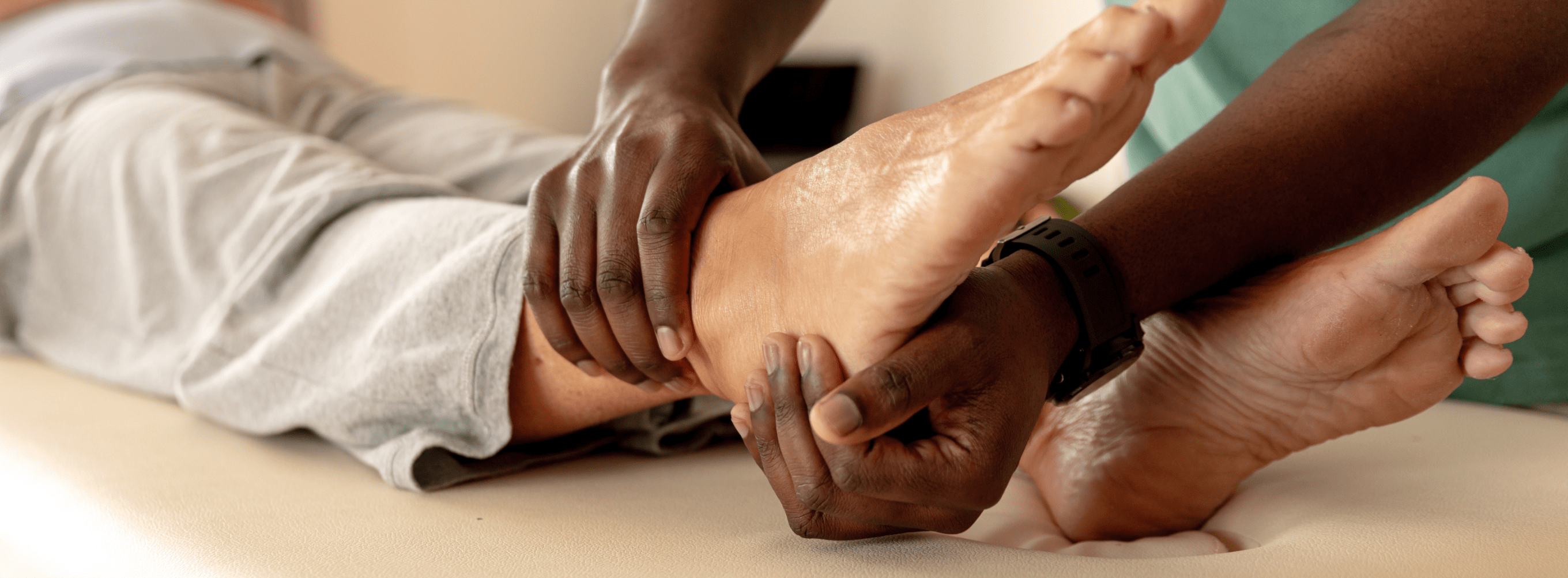
Diabetes & Charcot
Diabetes & Charcot: By the Numbers

37.3 million
Americans currently live with diabetes, with more than 20% of those believed to be undiagnosed. 1
Around the globe, data show that diabetes leads to
one major limb amputation every 20-30 seconds, with more than 2,500 limbs lost each day.3
Diabetics are
20x
more at risk for lower extremity amputation.7
People of color and lower socioeconomic status are disproportionately affected.1
1.4
million
Americans are diagnosed with diabetes each year.1
Hispanic/Latino communities are
1.5x
more likely to have an amputation and Indigenous communities face amputations rates that are 2x higher than those among non-Hispanic white Americans.4
Remember: While Charcot is not reversable, the progression of the disease may be managed and more serious outcomes, like amputation, can be avoided if addressed by a healthcare provider in a timely manner.
Importance of Saving a Limb
Lower extremity amputation (LEA) is linked to high rates of mortality. Mortality risk increases when people are unable to walk after the normal recovery period.5
One amputation often leads to another – 68% of people who undergo an LEA will face the same outcome on the other limb within five years.6
Avoiding amputation may help protect a person’s quality of life and significantly reduce long-term healthcare costs.2
– Mario A. Cala, DPM
Prevention May Be Possible
Dr. Jon Bloom
CEO, and Co-Founder of Podimetrics and a Founding Partner of the Amputation Prevention Alliance

Access to quality care and earlier intervention remains the challenge that leads to unnecessarily high rates of amputations, particularly among people of color.1
You may play an important role in preventing Charcot and its complications.
Regular foot examinations are a great way to identify risk factors early on. They can be done at home daily but are recommended at least once per year by a qualified foot and ankle surgeon.7
Other important steps you can take include:
- Keeping blood sugar levels (aka your A1C) under control
- Taking care to avoid injury, and treating injuries quickly after they happen
- Keeping open wounds clean and dry to prevent infection
- Following the care team's advice for short- and long-term treatment plans
- Embracing the Team Approach
Early intervention is key. It may save a limb or even a life.
References
- Statistics About Diabetes. American Diabetes Association. (2022.) https://diabetes.org/about-us/statistics/about-diabetes.
- Walicka, M., Raczyńska, M., Marcinkowska, K., Lisicka, I., Czaicki, A., Wierzba, W., & Franek, E. (2021). Amputations of Lower Limb in Subjects with Diabetes Mellitus: Reasons and 30-Day Mortality. Journal of diabetes research, 2021, 8866126. https://doi.org/10.1155/2021/8866126.
- Bharara, M., Mills, J. L., Suresh, K., Rilo, H. L., & Armstrong, D. G. (2009). Diabetes and landmine-related amputations: a call to arms to save limbs. International wound journal, 6(1), 2–3. https://doi.org/10.1111/ j.1742-481X.2009.00587.x.
- American Diabetes Association Unveils Amputation Prevention Alliance to Address the Diabetes-Related Amputation Pandemic. American Diabetes Association. (2022). https://diabetes.org/newsroom/press-releases/2022/ ADA-unveils-amputation-prevention-alliance-to-address-diabetes-related-amputation-pandemic.
- Wukich, D. K., Ahn, J., Raspovic, K. M., Gottschalk, F. A., La Fontaine, J., & Lavery, L. A. (2017). Comparison of Transtibial Amputations in Diabetic Patients With and Without End-Stage Renal Disease. Foot & Ankle International, 38(4), 388–396. https://doi.org/10.1177/1071100716688073.
- Singh N, Armstrong DG, Lipsky BA. (2005.) Preventing foot ulcers inpatients with diabetes. JAMA 2005; 293:217–28.
- Ang, G. Y., Yap, C. W., & Saxena, N. (2017). Effectiveness of Diabetes Foot Screening in Primary Care in Preventing Lower Extremity Amputations. Annals of the Academy of Medicine, Singapore, 46(11), 417–423.
Important Information
Individual results and activity levels after surgery vary and depend on many factors including age, weight, and prior activity level. There are risks and recovery times associated with surgery, and there are certain individuals who should not undergo surgery. Only a physician can tell you if this product and associated procedure are right for you and your unique circumstances. Please consult with a physician for complete information regarding benefits, risks, anticipated implant duration and possible outcomes.
AP-016836